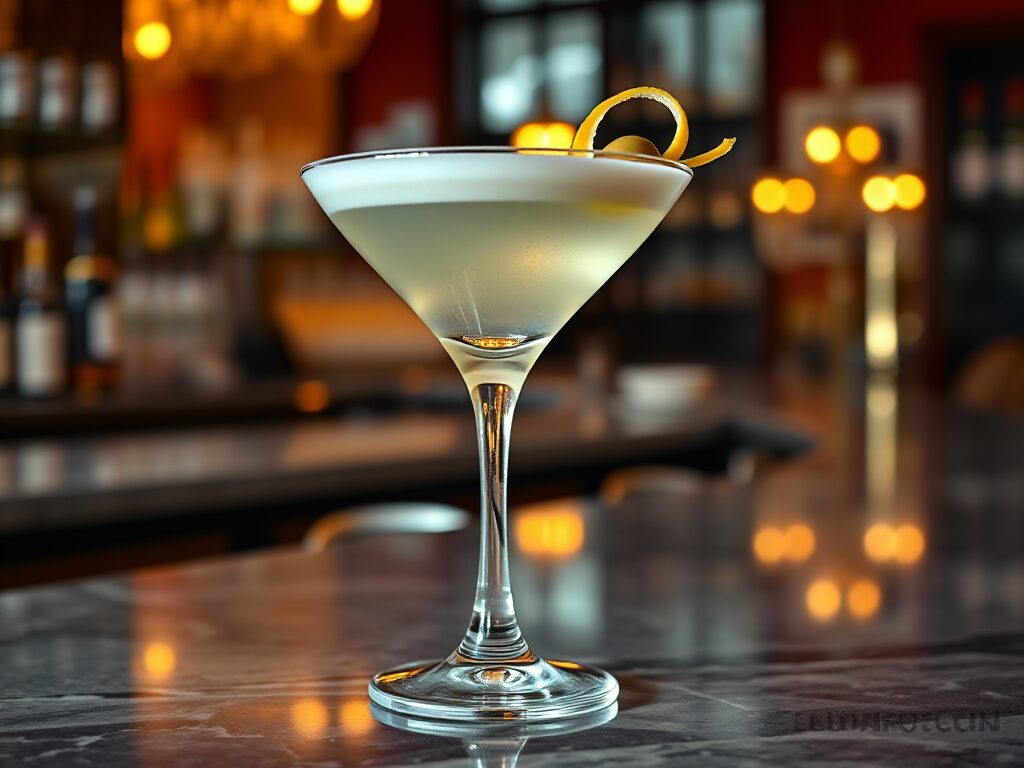Origins and Evolution
The exact origins of the martini are shrouded in mystery, with several competing theories. One popular story attributes its creation to a bartender in Martinez, California, during the Gold Rush era of the mid-19th century. Another theory suggests it evolved from a cocktail called the Martinez, which appeared in Jerry Thomas’s 1887 “Bartender’s Guide”. The martini’s evolution can be traced through various bartending guides: from the late 19th century to modern-day variations, showcasing its adaptability and enduring popularity.
In these early guides, the martini was often made with Old Tom gin, a sweeter style of gin, and sweet vermouth, creating a more robust flavor profile than the dry martini we recognize today. As tastes evolved, so too did the ingredients, leading to the introduction of dry vermouth and the preference for London dry gin.
By the early 20th century, the martini had firmly established itself as a staple in American cocktail culture. Prohibition in the 1920s only fueled its popularity, as speakeasies across the country served the drink in secret, often with a twist of lemon or an olive to add a touch of sophistication. The martini became a symbol of elegance and rebellion, capturing the spirit of the Roaring Twenties.
The post-World War II era saw the martini reach new heights of fame, particularly through its association with the glamorous lifestyles portrayed in movies and television. Iconic characters like James Bond, who famously ordered his martini “shaken, not stirred,” further cemented the cocktail’s status as the drink of choice for the suave and sophisticated.
As the decades progressed, various interpretations of the martini emerged, including the vodka martini, which gained traction in the 1970s and 80s. Bartenders began to experiment with flavored vodkas and innovative garnishes, leading to a plethora of creative variations. Despite these changes, the classic gin martini remained a beloved favorite, often enjoyed in its simplest form: a cold glass, a splash of dry vermouth, and a garnish of either an olive or a lemon twist.
- 1884: The “Martinez” appears in O.H. Byron’s “The Modern Bartenders’ Guide”
- 1888: Harry Johnson’s “Bartenders’ Manual” includes a recipe for a “Martini Cocktail”
- 1904: The “Marguerite Cocktail” emerges as an early form of the dry martini
- 1907: William Boothby’s guide features the first recipe for a “Dry Martini Cocktail”
The Classic Recipe
While variations abound, the classic martini recipe typically consists of:
- 2 1/2 ounces gin (preferably London Dry)
- 1/2 ounce dry vermouth
- Garnish: lemon twist or olive
To prepare:
- Fill a mixing glass with ice
- Add gin and vermouth
- Stir for about 30 seconds until well-chilled
- Strain into a chilled martini glass
- Garnish with a lemon twist or olive
Key Ingredients and Their Roles
- Gin: Provides the backbone of the cocktail with its botanical notes
- Vermouth: Adds complexity and balances the gin’s strength
- Garnish: Enhances aroma and adds a final touch of flavor
Popular Variations
The martini’s versatility has led to numerous variations:
Dirty Martini: Adds olive brine for a savory twist
Vodka Martini: Substitutes vodka for gin
Gibson: Garnished with a cocktail onion instead of an olive or lemon twist
Vesper: Combines gin, vodka, and Lillet Blanc
Perfect Martini: Uses equal parts sweet and dry vermouth
The Art of Personalization
The martini is highly customizable, with preferences ranging from “bone dry” (minimal vermouth) to “wet” (more vermouth). The choice of gin or vodka, vermouth ratio, and garnish all contribute to a drinker’s personal ideal martini.
Cultural Impact
The martini has left an indelible mark on popular culture, featured in countless films, books, and songs. It’s famously associated with James Bond’s “shaken, not stirred” preference, though purists insist on stirring to maintain clarity and texture.
Tips for the Perfect Martini
- Use high-quality spirits and fresh ingredients
- Chill your glass beforehand
- Stir (don’t shake) for optimal clarity and texture
- Experiment with different gins, vermouths, and ratios to find your preferred style
- Express citrus oils over the drink for enhanced aroma
Today, the martini continues to be celebrated in cocktail bars around the world, with mixologists exploring new techniques and ingredients while paying homage to its storied past. Whether served in a traditional coupe or a modern twist on presentation, the martini endures as a timeless symbol of sophistication, embodying the evolution of cocktail culture throughout the ages.
Whether you prefer it classic, dirty, or with a twist, the martini remains a timeless cocktail that continues to evolve while maintaining its status as an icon of sophistication. Its simplicity belies the depth of flavor and the art of its preparation, making it a perennial favorite among cocktail enthusiasts and casual drinkers alike.
